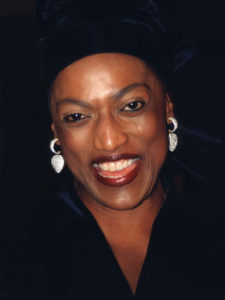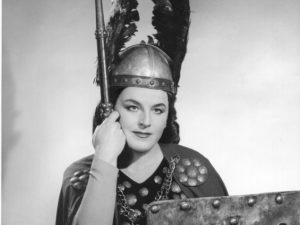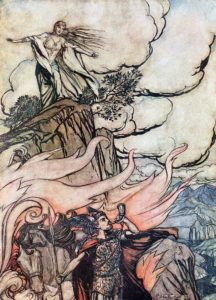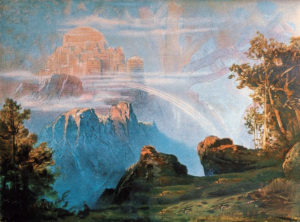Cause and Effect presents:
Das Musikdrama von Richard Wagner [1813-1883]

“Wagner’s music is better than it sounds.” -Mark Twain
The influence of German composer Richard Wagner (1813-1883) on our world is too vast to fully assess. He found the conventions of the opera world too shallow and restricting, but gradually broke free from them with his “musikdrama”. He wanted to change the culture and he did.
 [Kirsten Flagstad as Isolde.]
[Kirsten Flagstad as Isolde.] [Jessye Norman]
[Jessye Norman]
Also a prolific thinker and writer, Wagner didn’t just impact music. Once his name and ideas became known, he acquired many devout and fanatical followers all across Europe and elsewhere. Painters and poets who had never even heard Wagner’s music were calling themselves Wagnerians. He seemed to change how artists thought about their art and their audiences.
 [Birgit Nilsson as Brünnhilde.]
[Birgit Nilsson as Brünnhilde.]
 [1875 engraving of the Bayreuth Festspielhaus]
[1875 engraving of the Bayreuth Festspielhaus]
You could say that in the mid- to late-19th century there were two kinds of artists: Those who wanted to be like Wagner, and those who deliberately tried to avoid being like Wagner. Karl Marx even complained once that he couldn’t go anywhere without people talking about Wagner. He is more than just a name, he is an adjective: Wagner left us in a Wagnerian world.
 [Arthur Rackham illustrations for Wagner’s Ring.]
[Arthur Rackham illustrations for Wagner’s Ring.]
Wagner is best known for a dozen or so music dramas such as Tannhauser, Parsifal, and his massive four-part series of operas Der Ring Des Nibelungen.He quite literally revolutionized music with his 1859 tragedy Tristan und Isolde, in which he turned traditional harmony on its head and lead the musical world down a path toward the radical innovations of the early twentieth century. Composers as diverse as Bruckner, Mahler, Debussy, Strauss, and Schoenberg all revered Wagner and learned from him in their own ways.

[Max Bruckner (1836-1918), The Walhalla, backdrop for the scenic design of Wagner’s The Ring of the Nibelungs, Bayreuth]
If you are interested in learning more about Wagner’s political beliefs and actions, I may suggest exploring Stephen Fry’s 2010 documentary Wagner & Me, as well as the 2020 book Wagnerism: Art & Politics In The Shadow Of Music by Alex Ross. These two works will shed far more light on Wagner the man than I am willing or able to do here. Today we shall keep it simple and celebrate Der Meister’s extraordinary gift of music.
Show Archive
Play show / Add show to playlistPlaylist:
-
Arturo Toscanini & NBC Symphony Orchestra, “Tannhauser Overture/Venusberg Music”
from Toscanini Conducts Wagner
RCA Red Seal - 2013
recorded 1952
-

Houston Symphony Orchestra & Leopold Stokowski, “Parsifal, WWV 111: Music From Act III”
from Wagner: Parsifal - Good Friday Spell & Symphonic Synthesis Act 3 - EP
Everest Records - 1959
-
Kirsten Flagstad, with Wilhelm Furtwängler & Vienna Philharmonic, “Götterdämmerung, Act III. Brünnhilde's Immolation”
from Wagner: Operatic Extracts
EMI Classics - 2004
recorded 1952
-
Leopold Stokowski & Symphony Of The Air, “Wagner - Tristan Und Isolde, Act III, Prelude”
from Leopold Stokowski: The Stereo Collection 1954-1975
RCA Red Seal - 2012
recorded 1961
-
Jessye Norman with Klaus Tennstedt & The London Philharmonic, “Tristan und Isolde: Prelude & Mild un leise”
from Wagner: Opera Scenes
Warner Classics - 2013
-
Birgit Nilsson & Wolfgang Windgassen, “Act II Duet "O sink hernieder"”
from Tristan und Isolde Bayreuth 1966
Deutsche Grammophon - 1966
-
Karl Böhm & Bayreuther Festspiele, “Die Walkure Act II excerpt”
Decca - 1967
DJbob Cause and Effect September 10th, 2022
Posted In: Blogging, Music, Music Shows

